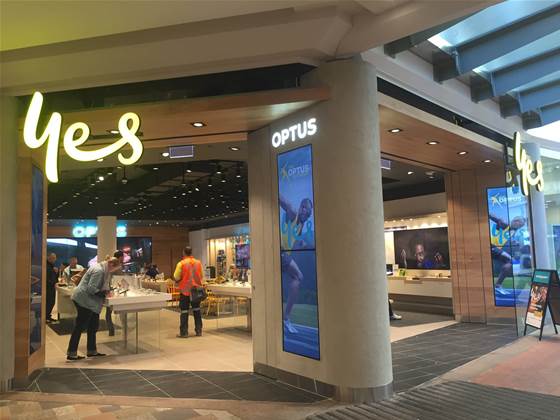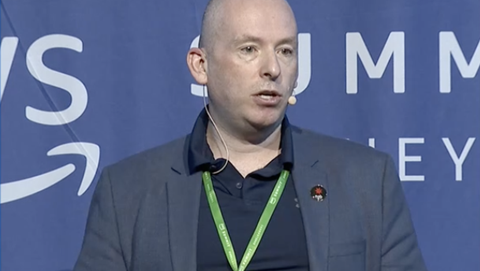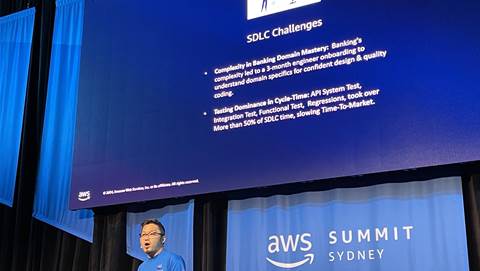Optus has divided its Australian customer base among 100 dedicated “communities” that now handle all customer support requests, each trained in the local lexicon of the areas they are assigned.

Vice president of digital consumer Vaughan Paul told iTnews that each support “community” had up to 50 staff, meaning up to 5000 staff are fielding, triaging and resolving support requests under the telco’s restructured customer service model.
The new model was unveiled in December last year.
Instead of having a few large call centres that answer and triage inbound support requests, potentially requiring multiple handovers between internal departments, Optus customers are now supported by the same “dedicated” multi-disciplinary team or “community of experts” every time they get in contact.
iTnews has previously reported that the communities all sit together in the one location, and that they are assigned to serve particular geographic areas.
However, it was not clear how many such communities existed, nor their size or setup.
Paul told iTnews that while the telco had set up around 100 communities, this may not be the end number.
He also said there are variations between the communities that will be ironed out over the next year.
“We’ve got around about 100 of these communities, and over time we’ll rightsize that, depending on how they go, how efficient they are, and so on,” Paul said.
“We’ve basically put our workforce that supports the consumer business into this model and then as they’ve moved into it … they’ve got to pick up knowledge across all things.
“They used to be more line-of-business, now they cover everything, so over the next 12 months it may take some time to really get them up to a common level of proficiency.”
Paul said that while all 100-plus communities are live, they are “at varying points of scale”.
“They’re all doing the same foundation of service transactions, but on the ‘opportunity’ transactions they’re not at the same level. That will happen over time,” he said.
“We’re just at the point of training the communities. Some are already doing what we call ‘growth’ or sales, others are not there yet and we’ll manage them through.
“We want to get to the point by the end of this year where they’re all at the same level of maturity. “The intent is that they become ‘one stop shops’.”
Paul said that each community is also equipped with some local knowledge of the area they service.
“One of the first areas we did was we started in the Brisbane area and we assigned an offshore team to the Brisbane suburbs,” he said.
“To launch that, they all got into State of Origin, XXXX and local issues so they started to get a deeper understanding of the territory they are in.
“We want to make the [support] ‘community’ proud about the area they’re servicing so they can do a bit more research at the local level - what are the issues; where is it, is it inland or on the coast; what may be unique to them e.g. bushfires; and what is the demographic surrounding.
“We want them to feel a little bit closer to the environment, rather than just going, ‘Well, everyone’s from Australia and they all love kangaroos’.”
While the intent is for a “community” to handle all inbound support requests they receive, Optus has designed the support model to have a fallback option in case one community is being overwhelmed.
“We’ve got communities that support each other as a primary volume lever, so if one community is overflowing, there’s a natural [second] community in which they fall back to as opposed to just sending the calls anywhere,” Paul said.
“Even when you’re managing volume, you want that local alignment. You want [the community] to know and feel like they own the customer experience and that they’re going to look after that customer.
“So we have to be careful about when we hit peak workloads, how we manage that. It completely changes the way you run the business, but with the right outcome essentially.”
Paul said that the communities would each have a “primary” and “secondary” assignment for overflow purposes, but again this could change over time as the support model is refined.
“We’ll see what’s the best way to manage that over time,” Paul said.
“At the moment we’ve modelled where the overflow will go.”
Likewise, the number of communities may fluctuate if Optus refines the criteria used to determine the geographies that each covers.
“[At the moment] we’re basically grabbing suburbs and looking at the volume of customers and then allocating them to different [communities], so we’re trying to make sure that there’s a population basis to it so we can manage the volume [of support requests],” Paul said.
“We’re trying to make sure that there’s a good population spread.”
Paul said the ratio of customers to support agents under the old and new support models is the same.
However, the new structure meant an increase in coaching and support resources for the communities themselves, to help them deal with the broader cross-section of issues and requests they now cover.
Technology evolution
Last month, Optus revealed that it is using Google’s contact centre AI or CCAI platform to correctly triage and route calls to the appropriate service community.
Optus is an early adopter of the technology and has a three-year partnership with Google Cloud to develop CCAI for its specific use cases.
At the moment, customers with support requests use text-based chat as the first port of interaction with the support community.
The platform is trained to recognise keywords or phrases in order to correctly route and resolve the interaction. These are known as “intents”.
Depending on the support request, a bot can either handle the entire interaction or route it to a support staffer with the specific knowledge to resolve it.
Paul said the bot would be able to recognise and handle a greater number of intents over time.
At present, the bot is trained to recognise up to 50 intents.
Some of these relate to billing - “obviously that’s a big frustration point” - and include requests to pay a bill, billing errors, querying a charge or an extension for payment.
“All of that the bot is able to triage at the moment,” Paul said.
He said there were still intents that Optus wanted handled by a person rather than a bot, at least for now, even if the bot is capable of doing it.
“We’ll let the bot do a certain amount of the transaction,” he said.
“The bot can fully contain you and put in a payment arrangement for you - you don’t even need to talk to a customer services agent. So if you need an extra seven days, the bot can do that.
“But if you said, ‘I’m thinking about cancelling’, we would pass you through to an agent because it makes sense that a human talks to you about why and how we might be able to help you.
“But, in time, the bot will be able to do that as well.
“In the large percentage of cases, the bot should be able to sell to you and answer you, and it’s just a matter of time before it will.”
Also in the works with CCAI is an ability for customers to speak to the bot, rather than just type into a chatbot-like interface.
Paul said voice pilots would start this year but not “for a number of months”.
“We’ve got a bit of work to do on voice with integration and getting the voice platform right so it’s going to take us a number of months to start to build that and get that into an early form of pilot,” he said.
“That will be probably towards the back end of the year before we start to see that at scale.
“Obviously we’re pushing the team to do that as quickly as possible because there’s some real benefits for our agents and for our customers, but there’s a fair bit of work there getting the integration right.”
Optus is also piloting an AI bot that support staff can use to query the telco’s internal knowledge base as they try to respond to support requests.
“Agents that are in that text [support] community will have AI to help them so they can get access to the latest information,” Paul said.
“The bot will be running there alongside them to prompt them if they need to follow up something.
“We’ve been piloting that, and we’ve got good feedback from our agents, and so it’s at the point now where we’ve got a proof-of-concept, and we feel comfortable that it’s scalable.”
Proactive service
Optus is hopeful that the customer service restructure and use of Google CCAI will ultimately enable it to provide proactive, even predictive, support to its customers.
“Our business is built around being a bit reactive - we wait for a call or a customer to connect to us, we try to triage it,” Paul said.
“I think what Google CCAI gives us is the ability to be more proactive.
“One of the streams [of our customer service transformation] will be thinking about how we can be proactive about contacting our customers before they contact us, and really revolutionising how service works in telco.
“We’re aggregating data to try and predict that you’re going to call, so that before you’ve even decided you’re going to call us, we’re starting to think [like that].
“We’ll have data from Google [CCAI] and our own data, but it’s pulling that together to start to inform a much clearer picture of the customer so we can start to do more pre-emptive work.
“That will help in the way we run the business.”



















